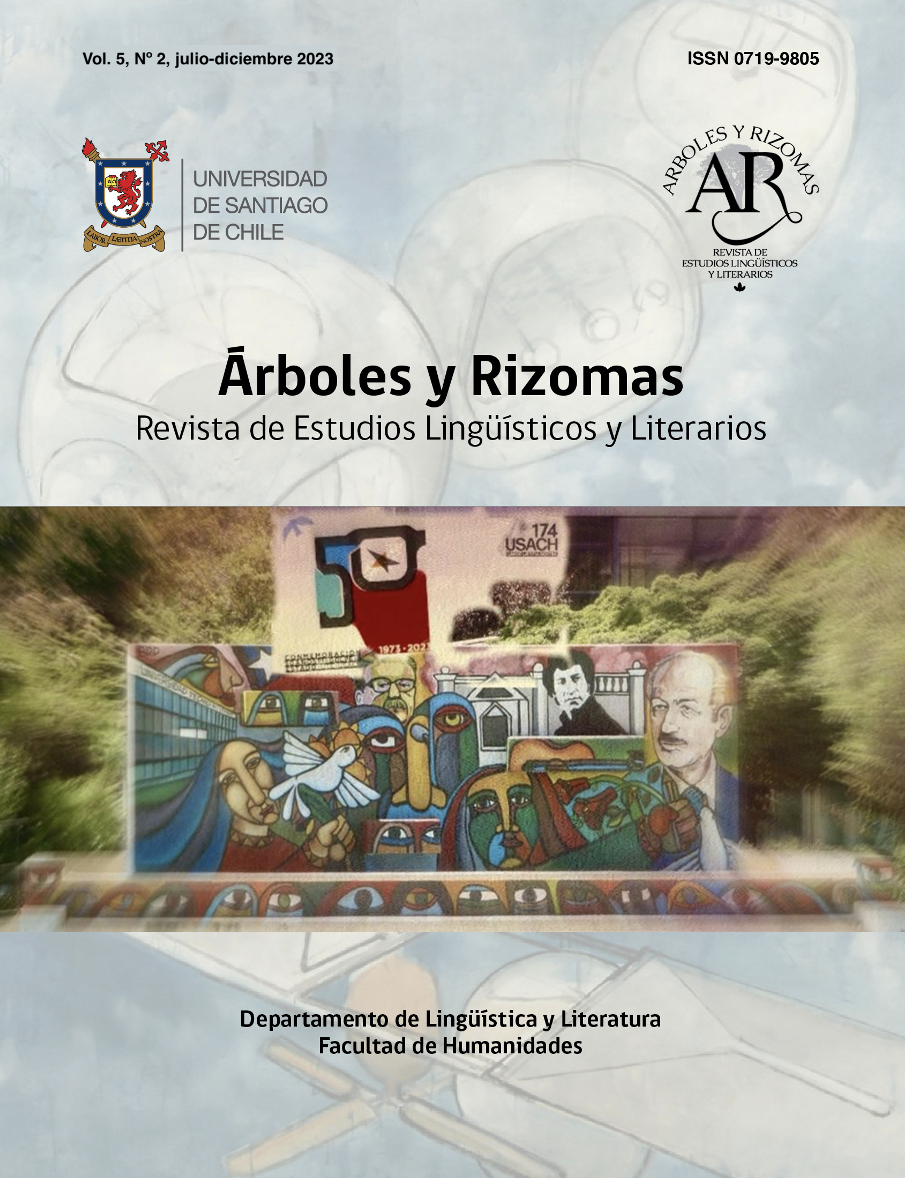Legend and oral telling in the novel "Polvo y ceniza"
DOI:
https://doi.org/10.35588/ayr.v5i2.6321Keywords:
Ecuadorian novel, fictional orality, oral tradition, legend, oral story-tellingAbstract
This article studies seven chapters of the Ecuadorian novel Polvo y ceniza, which make up a narrative block in which several narrators incorporate legend and oral story telling in the literary text. From the theoretical approach of oral narratives, without losing sight of the fact that it is about fictional orality in writing, we analyze how the discourse turns a historical character, Naún Briones, into a legendary figure. Operationally, the analysis comprises two sections that correspond to two distinctive characteristics of oral narratives: the referentiality of events in historical time and the recreation and updating of cultural values and beliefs. The analysis of the first reveals that, in general, an ambiguous referentiality gives rise to historical inaccuracies on which the legendary recreation of the protagonist is built. The analysis of the second, on the other hand, identifies narrators who refer to the facts from their individual experiences; however, through fictional orality, they nuance and expand their stories with collective versions that reflect cultural values and beliefs. Polvo y ceniza, in short, incorporates narrations from oral tradition into literary discourse that oppose the official history.
Downloads
References
Brumme, J. (2012). Traducir la voz ficticia. De Gruyter.
Bürki, Y. (2008). La representación de la oralidad bilingüe en la literatura. En J. Brumme & H. Resinger (eds.). La oralidad fingida: obras literarias (pp. 34-58). Iberoamericana-Vervuert.
Cárdenas, E. (1986). Polvo y ceniza. Oveja negra / El conejo.
Cierlica, P. (2016). Rasgos de oralidad en la narrativa breve hispanoamericana: Juan Rulfo [Tesis doctoral, Universidad Complutense de Madrid]. https://docta.ucm.es/rest/api/core/bitstreams/cdd82d6d-08d8-4854-afb8-32ae7fbd73bb/content
Colombres, A. (2006). Literatura oral y popular de nuestra América. Instituto Iberoamericano del Patrimonio Natural y Cultural-IPANC.
Colombres, A. (2009). Nuevo manual del promotor cultural I. Bases teóricas de la acción. Consejo Nacional para la Cultura y las Artes.
D’Alessandro, N. (2021). La figura de Evaristo Carriego en Borges y Ricardo Zelarayán: anonimato, reivindicación de lo provincial y oralidad. Variaciones Borges, 51, 25–42. https://www.jstor.org/stable/27034394
Espino, G. (2015). Literatura oral, literatura de tradición oral. Pakarina Editores. https://www.digitaliapublishing.com/a/58712/literatura-oral--literatura-de-tradicion-oral
Genette, G. (1989). Figuras III (Trad. Carlos Manzano). Lumen (Obra original publicada en 1972).
González Ortega, N. (2006). Relatos mágicos en cuestión. Iberoamericana-Vervuert.
Jiménez, M. (2017). La tradición oral como parte de la cultura. ARJÉ. Revista de Postgrado FaCE-UC, 11 (20), 299-306.
La Chica, M.-C., Curiel, A., Hernández, E. N., Pérez, M. B. S., García, A., & La Chica, M.-C. (2017). Narrativa de tradición oral maya tojolabal (1a ed.). Marcial Pons, Ediciones Jurídicas y Sociales. https://doi.org/10.2307/j.ctv10rrbv9
Lada Ferreras, U. (2003). La narrativa oral literaria. Estudio pragmático. Universidad de Oviedo.
Martínez Rodríguez, J. A. & Morillas Caro, F. (2021). El Derecho natural y el reinado de Edipo Rey (1a ed.). J.M Bosch. https://doi.org/10.2307/j.ctv253f6bz
Méndez. García, E. (2019). La oralidad coloquial de La Colmena. Oralia: análisis del discurso oral, 22(2), 347-390. https://doi.org/10.25115/oralia.v22i2.6659
Nemrava, D. & De Rosso, E. (2014). Entre la experiencia y la narración. Ficciones latinoamericanas de fin de siglo (1970-2000). Verbum, S. L.
Ocampo Jiménez, A. (2013). Naún Briones… La verdad. Casa de la Cultura Ecuatoriana.
Prat Ferrer, J. (2013). Historia del cuento tradicional. Fundación Joaquín Díaz Urueña.
Reyes, E. (1969). Naún Briones… ¿Guerrillero sin bandera o salteador de caminos? Vistazo, (145), 60-66.
Sacoto, A. (2014). 14 novelas claves de la literatura ecuatoriana (3a ed.). Casa de la Cultura Ecuatoriana.
Shaw, D. L. (2008). Nueva narrativa hispanoamericana. Boom. Posboom. Posmodernismo (9a ed.). Cátedra.
Sklodowska, E. (1991). La parodia en la nueva novela hispanoamericana (1960-1985). John Benjamins.
Snauwaert, E. (2015). Las referencias futbolísticas en la narrativa de Alfredo Bryce Echenique: un encuentro entre oralidad y visualidad. CiberLetras: Revista de Crítica Literaria y de Cultura, 34. https://www.lehman.cuny.edu/ciberletras/v34/snauwaert.htm
Varas, P. (2008). Polvo y ceniza: Historia y mito del bandido Naún Briones. Hispanófila, (153), 3-43. https://doi.org/10.1353/hsf.2008.0037
Zavala, M. (2020). La leyenda. Aproximaciones a un género ‘casi inasible’. Revista de Literaturas Populares, Año XX (1 y 2), 185-221.http://rlp.culturaspopulares.org/textcit.php?textdisplay=943
Zavala, M. (2021). La voz. Literatura de tradición oral del centro-norte de México. El Colegio de San Luis.
Downloads
Submitted
2023-08-31Published
Versions
- 2024-05-16 (2)
- 2023-12-07 (1)
Issue
Section
License
Copyright (c) 2023 Mario Conde Rivera

This work is licensed under a Creative Commons Attribution 4.0 International License.






